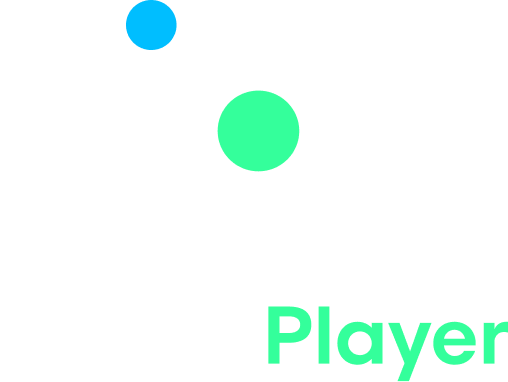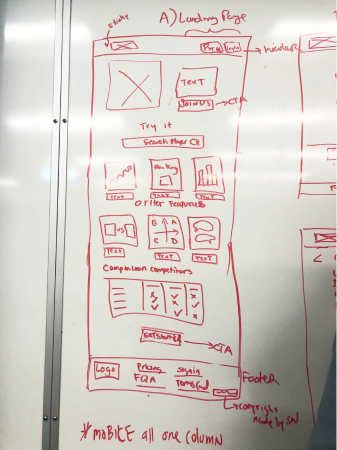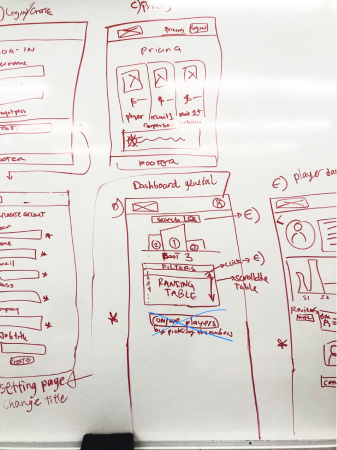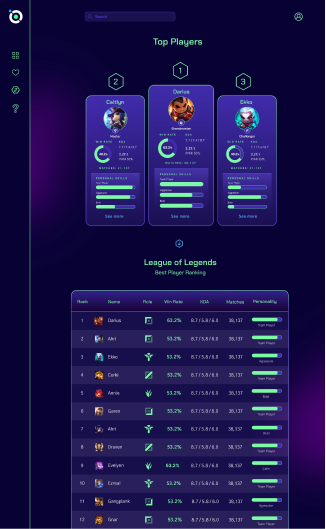Global Player
Hire the best, become the best.
Global Player is a cut-edging website that helps League of Legends recruiters to access to relevant information such as performance data, endorsements, analytics and statistics about the pro-player they are scouting to hire.
Create a website which responses to a business problem bringing out real data-visualization.
Develop a convenient and integrated tool where League of Legends recruiters can use information to compare, analyze and make right decisions.
Research, design and implement a website for Project 2 at Langara.
Figma, Illustrator, Photoshop, After Effects, Node, React.

“How can I make the right decision to hire the best pro-player for my team?”
Despite League Of Legends was a unknown topic for most part of the team, specially designers, we did a deep research so we had a better understanding about the industry by itself as well as LoL recruiters and players. We got interesting insights which helped us to build an user-centred website.
Hiring a Pro Player is tricky as a number of factors count when selecting a new hire. During interviews and also analyzing the gaming industry, it was found that the companies that run the competitive teams still use archaic methods to hire new players like referrals or superficial information.
- World’s largest esports developed and published in 2009 as a multiplayer online battle arena video game
by Riot Games.
- Free-to-play, monetized through purchasable character customization.
- 2nd most
profitable game to play competitively in eSports history.
- Over 150 million registered users, with around 125 million active monthly players.
- Played by teams of
five players, currently more than 100 teams.
- Despite it was a PC game, the mobile version is getting
more popular due to its usability.
- Males account for 82% of the player base, while females account for 12%.
- The average age of a LoL
player in 2020 was 27 years.
- 75% of the player base are younger than the age of 25.
User range
from Millennials to Gen Z.
After conducting the market research, we analyzed Global Player’s top competitors. We compare features among the main competitors and we got interesting differences which help us to focus on convenient solutions our users.
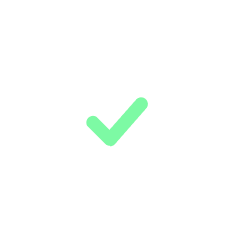




















We wanted to start exploring users by creating provisional personas in which we could empathize and gained basis for who we would conduct user interviews with to validate this first approach.
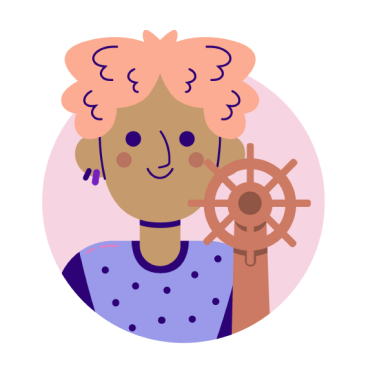
- Winning as much tournaments as we can.
- Finding an skilled and well behaved professional player.
- Failing in hiring process.
- Analyzing pro-player data is time-consuming.

- Find a pro player who has certain skills for an specific role.
- Being able to argument a hiring
decision with trustful data.
- Not having experience in hiring.
- Finding no data information of pro players’ behaviour.
By creating user stories we could define better our features and the user’s benefits with a high priority data visualization as the acceptance criteria.
“As a Recruiter, I want to visualize ranking amongst pro players so that I can know which players have the highest ranking”
“As a Recruiter, I want to narrow down my potential choices so that I can select two players and compare data side to side”
“As a Recruiter, I want to be able to access behaviour reviews so that I can understand if a pro player has had any toxic or unhealthy behavior with any another team”
After we conduct 5 interviews with League of Legends players and recruiters, we analyze the answers from the participants and we got main these conclusions:
- Before hiring a professional player, the recruiter goes over every player’s performance ranking.
- The
hiring process definitely impacts on the team’s success.
- There is some data which is not shown in the
statistics of players.
- Communication and personal skills are crucial to hire a new player.
- Captains
are likely the ones who hire a new pro player.
- Hiring process: 1) search the rank, 2) get the
statistics, 3) do a test or an interview.
- The company prioritizes players who have good attitudes and
behaviour.
- Before a player turns professional, Riot needs to check players' background.
After the user research we focus on how might we help our users to mitigate their pains points and achieve their goals. We came up with a pack of doable features which match business and user goals.
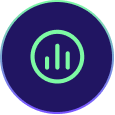

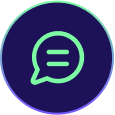

In order to more deeply empathize with the users, we created two paths: recruiter and player. However, the recruiter is our main user who will be the only one able to compare players’ performance.

I believe sketching the wireframes by hand is really helpful to define, at first glance, hierarchy and layout. By displaying the data, the best way to do it was through a dashboard interface because is more organized and easy to understand, so it will help the users to monitor, analyze, and make decisions base on the data presented.
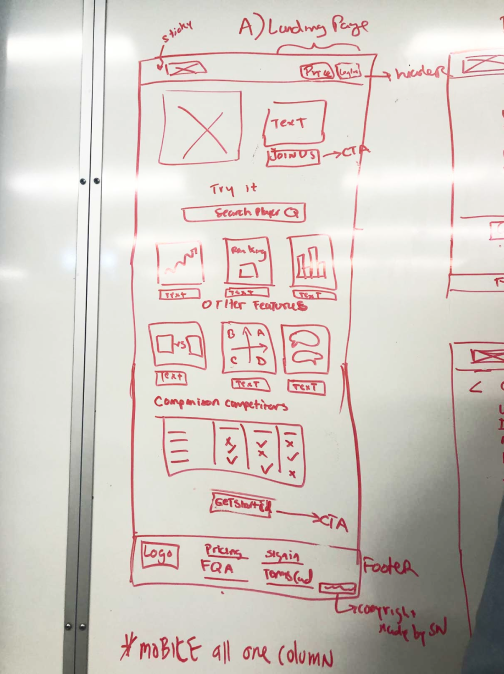

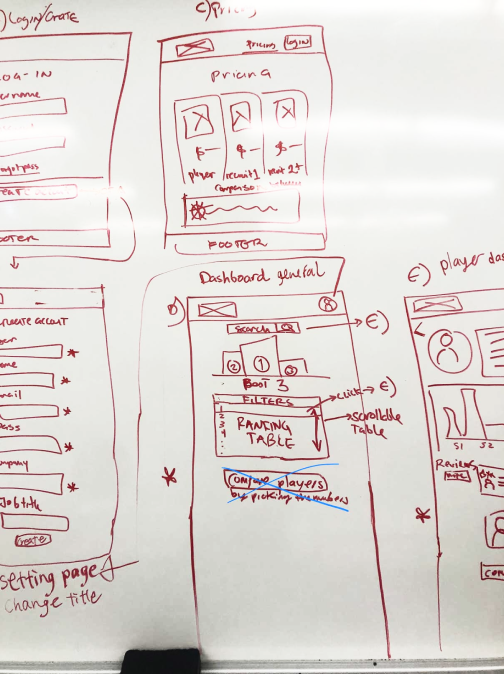
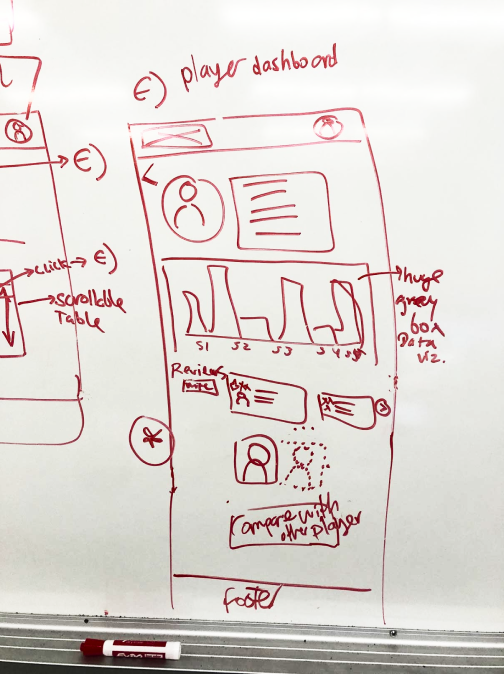
Using Figma, we designed high-fidelity wireframes based on sketches and low-fidelity wireframes. We used components which allowed us to be consistent and also for quick application of changes across multiples files.
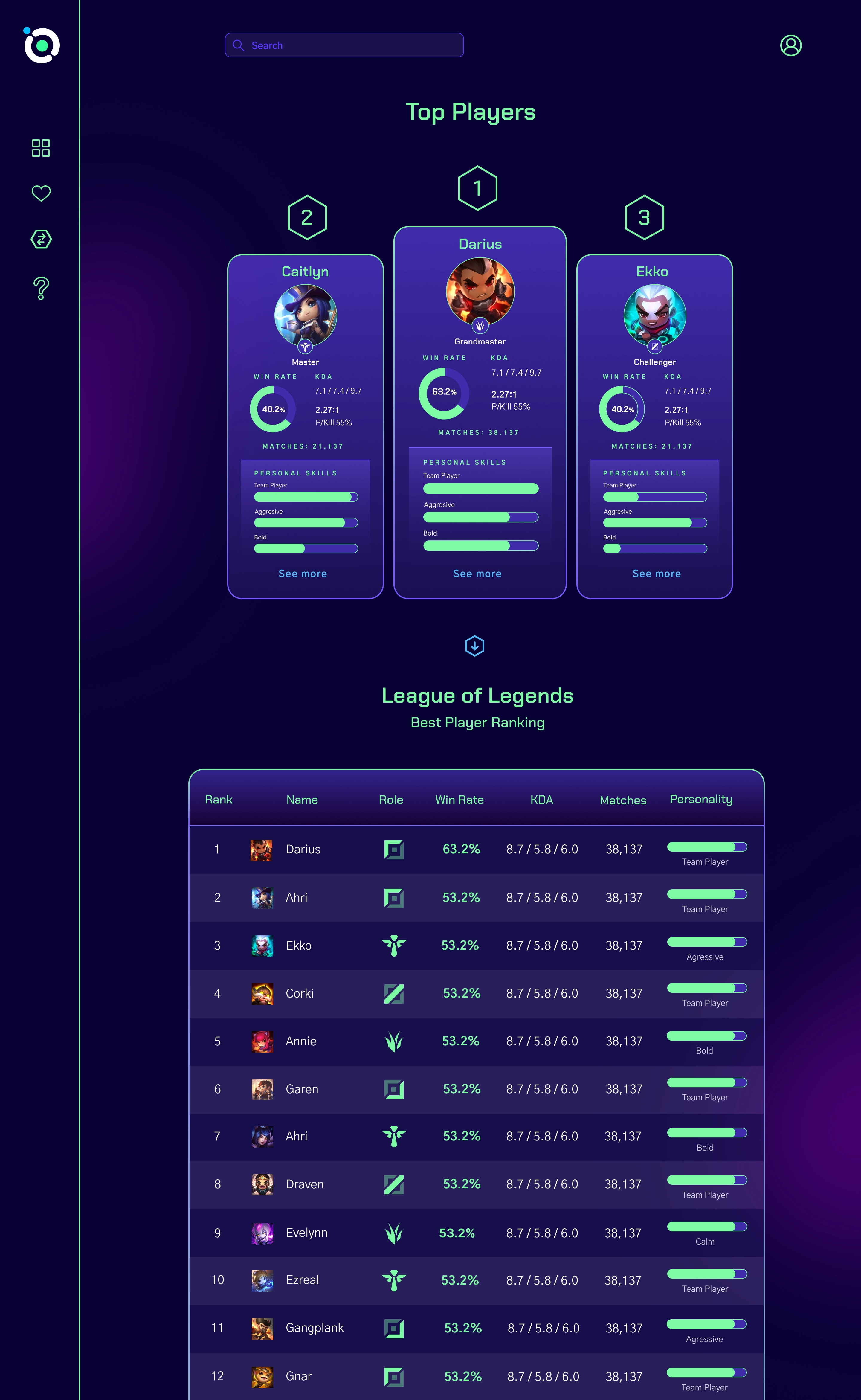

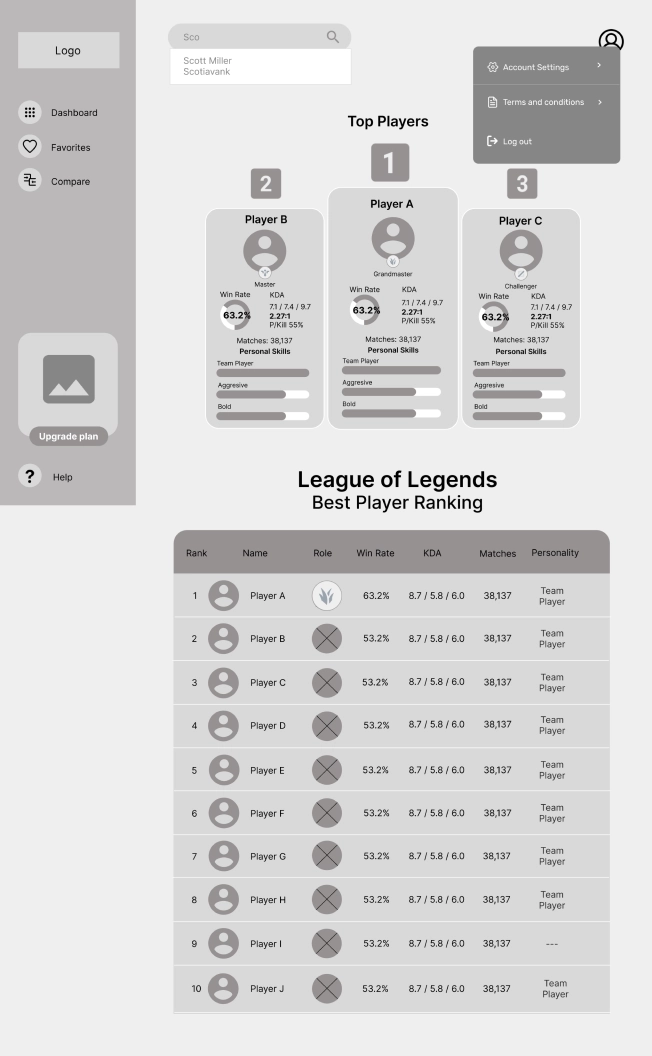

Our logo is a combination of a World and a Target. The green circle looks out the blue one which is orbiting around the white shape; as the recruiter does with the player through the Global Player app. It’s dynamic, simple, and responsive on different devices.
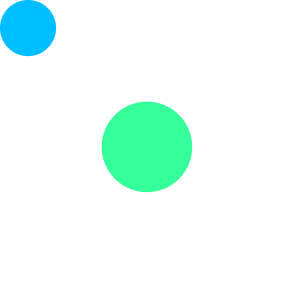








Our design system was designed in dark mode which is generally the mode gamers use all the time. We also used a bright complementary color palette which allowed us to emphasize specific elements by contrasting the colours with each other.
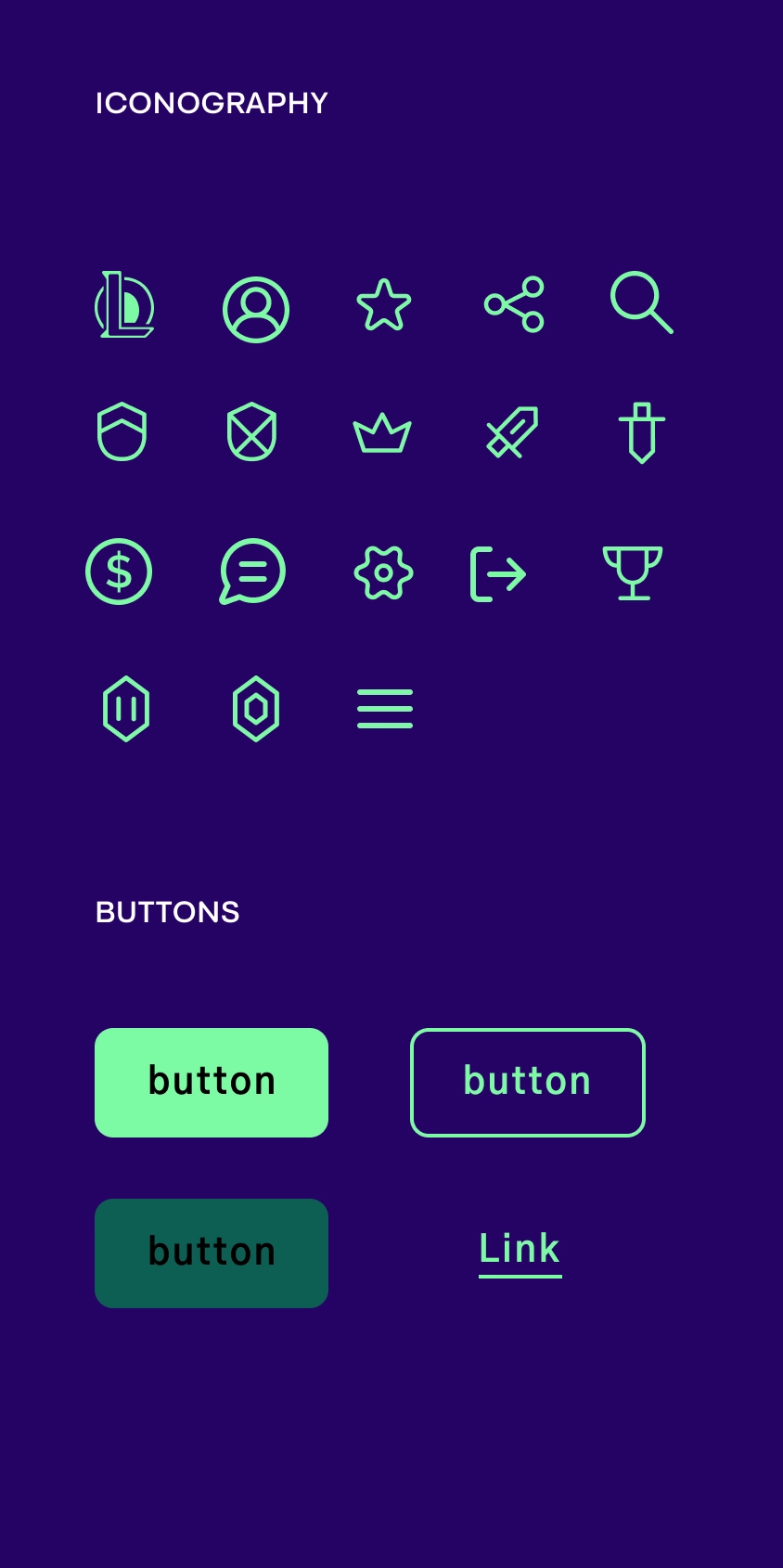
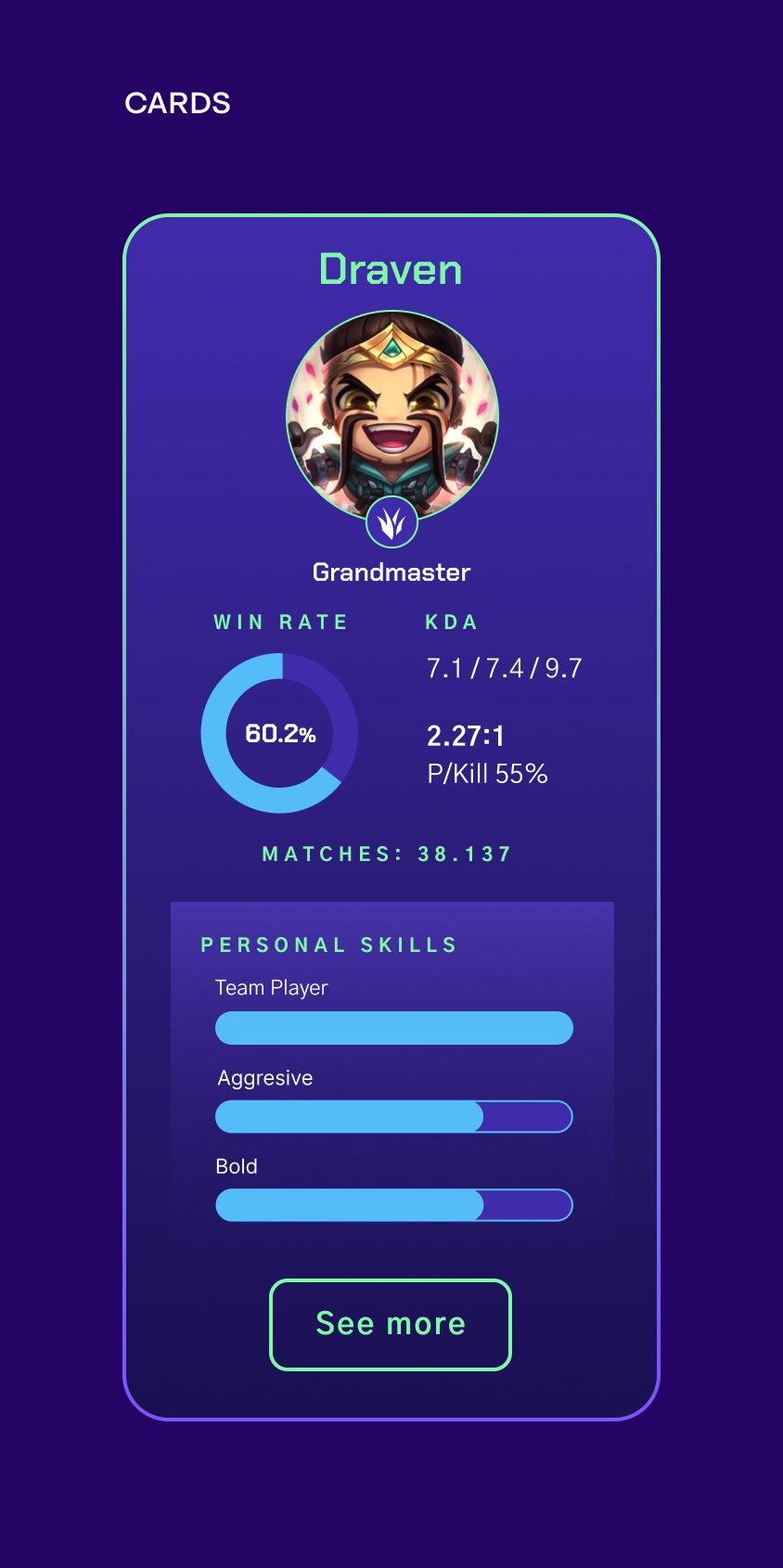
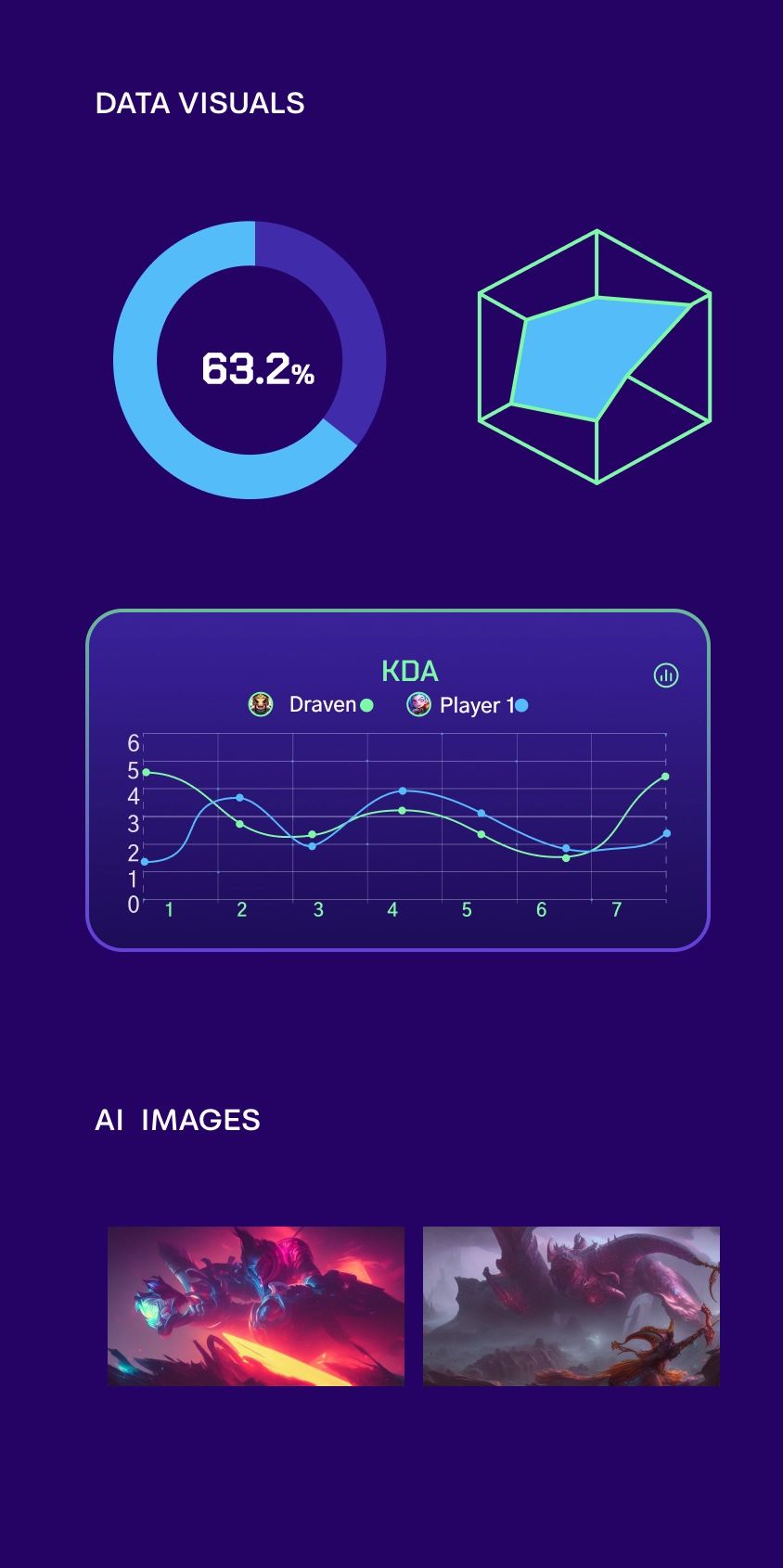
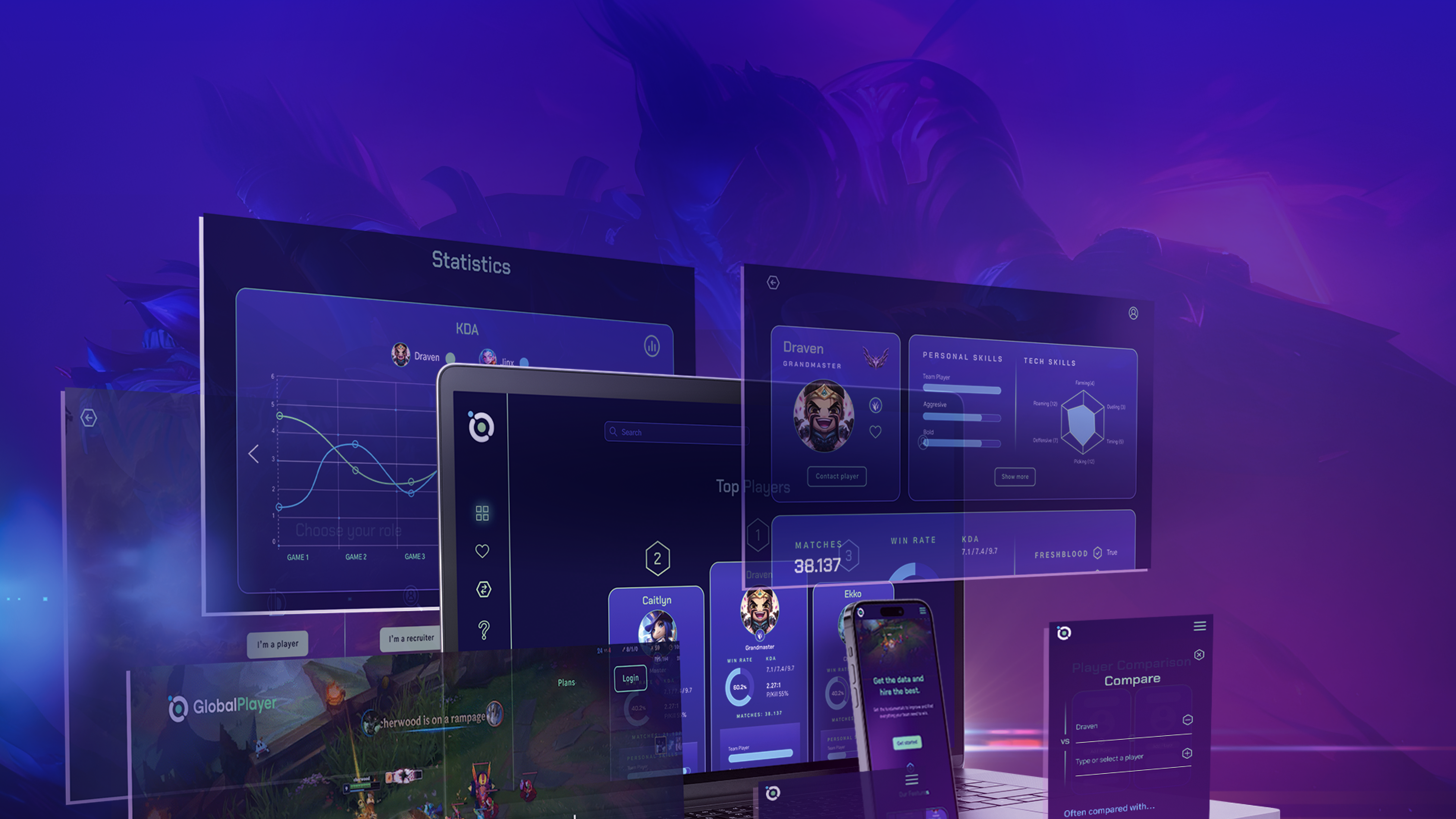
Chakra Petch is a Thai and Latin family which features Thai's traditional looped letterforms. It's a square sans serif with tapered corners. It works well for both digital and print based media.
Our design system was a dark-mode flat interface design. We needed to show heavy data information, so we pick this approach which made the data information easy to understand, compare and analyze, main goal of our users. Knowing that our users have a high-tech profile, we used advanced Artificial Intelligence for the backgrounds.


Despite we didn’t have idea about League of Legend’s world, we were able to deliver a successful MVP within 12
weeks. Synergy, commitment and persistency were key in the development and implementation.
Before culminating the project, we did a design critic where we got crucial insights to make
improvements; by doing this, we encountered issues very simple to fix in order to deliver a high quality
product with a focus on creating immediate value for our users.

